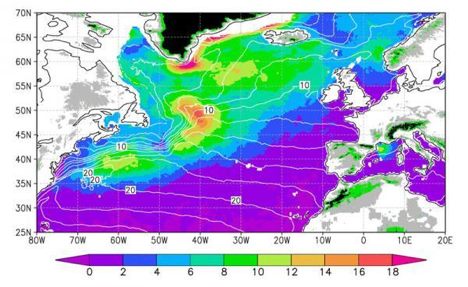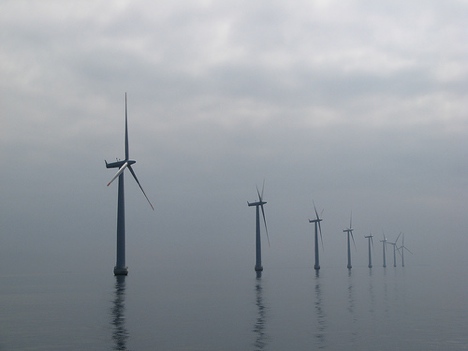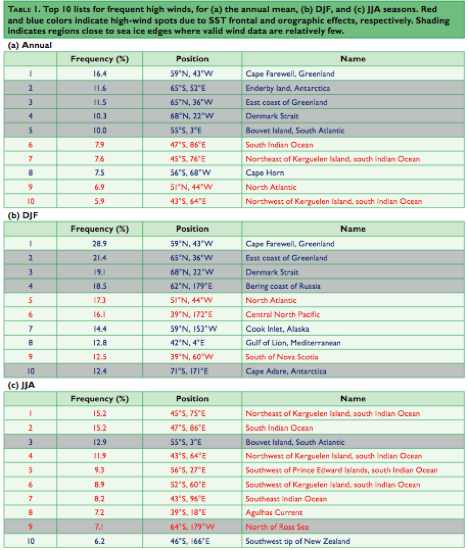 NASA Satellite Could Make Floating Ocean Wind Farms Possible(UPDATED)Jan 16, 2008 - TreeHugger
With all the talk about expanding the world's existing wind capacity, there is still surprisingly little attention being paid to the tremendous potential offered by ocean winds -- save for the occasional offshore wind park. Enter NASA: It turns out scientists have been using its QuikSCAT satellite for years to create maps of areas with strong wind activity. Paul Dimotakis, NASA's chief technologist at Pasadena's Jet Propulsion Laboratory, believes areas with high winds could produce 500-800 watts of electricity per square meter. While a bit less efficient than solar -- it generates roughly 1 kilowatt per square meter -- wind energy can be converted to electricity at a lower cost.
Winds tend to be stronger over the ocean because there aren't any hills, mountains or other physical objects to block their movement. These maps could make floating ocean wind farms a distinct possibility, according to Tim Liu, QuikSTAT's team science leader at JPL. The farms could be placed in regions that experience continuous strong wind activity -- which are readily identifiable from the satellite data. Originally launched in 1999, QuikSTAT helps track the speed, direction and strength of winds near the sea surface; its data can be used to predict storms and improve the accuracy of weather forecasts. Climate scientists and modelers have often used its data to study the interaction between ocean winds and weather patterns influenced by the currents and sea surface heat exchange. Wind farms could provide 10-15% of the world's future energy needs. This is hardly surprising, of course. A report we wrote about two years ago, entitled "A Framework for Offshore Wind Energy Development in the United States," projected that offshore wind power could generate over 900,000 megawatts of electricity -- enough to power the entire country. The UK, more so than most countries, has been on top of this for a while now. Britain and Scotland have made some major inroads in developing their offshore wind capacity. Prime Minister Gordon Brown recently unveiled an ambitious new green agenda stipulating that the UK would increase its offshore wind capacity thirty-fold to meet its 2020 renewable energy targets. To peruse a wide range of ocean surface wind frequency maps, have a look at "Global Distributions of High-wind Occurrence over the Ocean."
Via ::ScienceDaily:
Ocean Wind Power Maps Reveal Possible Wind Energy Sources
(news website) |
Email this page to a friend
If you speak another language fluently and you liked this page, make
a contribution by translating
it! For additional translations check out FreeTranslation.com
(Voor vertaling van Engels tot Nederlands)
(For oversettelse fra Engelsk til Norsk)
(Для дополнительных
переводов проверяют
FreeTranslation.com )




